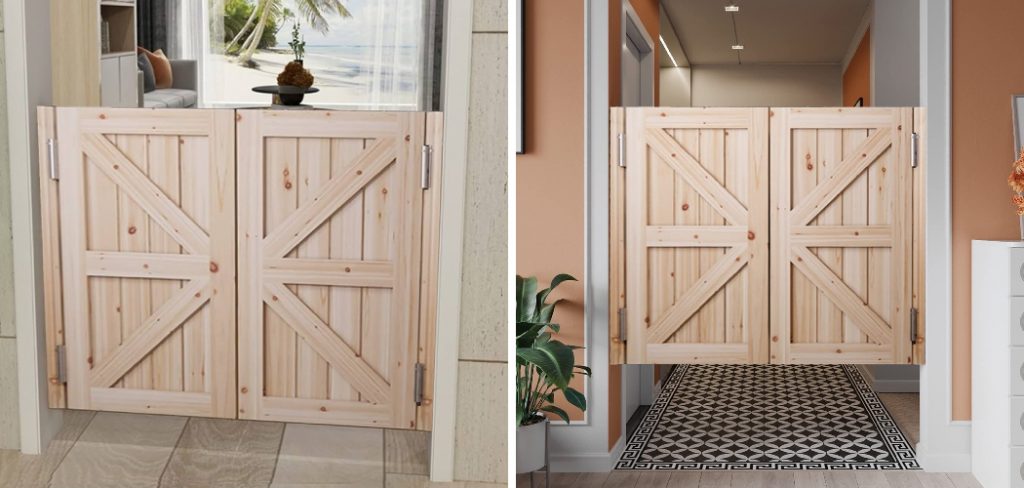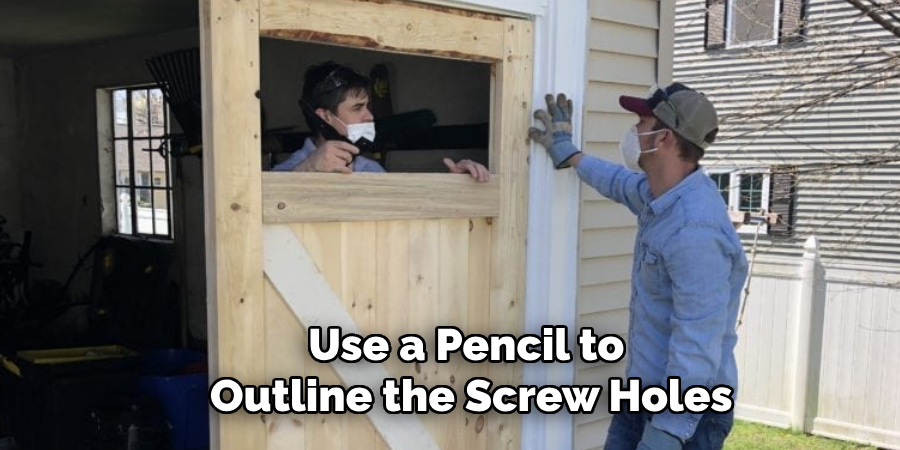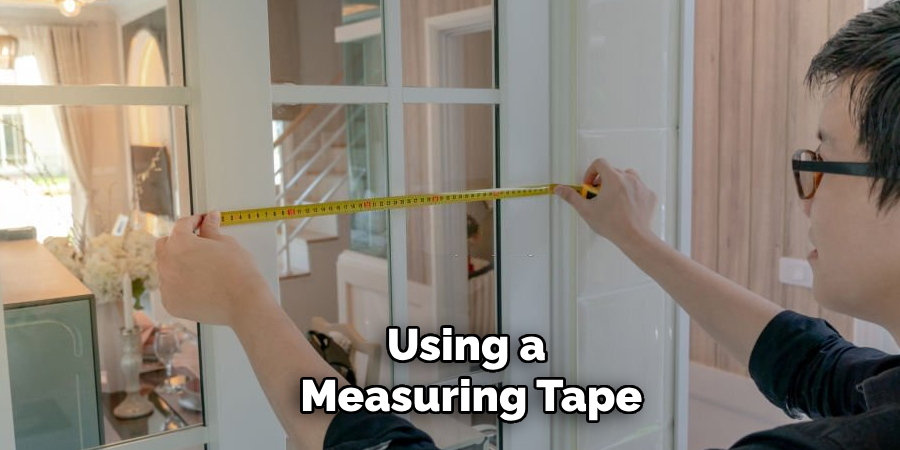When it comes to maintaining the functionality of a barn door, one of the common issues owners encounter is the door swinging open or closed unintentionally. This can be not only inconvenient but also potentially damaging to the door and surrounding structures. Addressing this issue effectively requires a combination of proper installation techniques and the use of specific hardware designed to keep the door stable.

In this guide on how to keep barn door from swinging, we will explore several methods and tips to ensure your barn door remains securely in place, regardless of external conditions.
Why Do Barn Doors Swing?
Before we dive into the solutions, it’s essential to understand why barn doors tend to swing in the first place. Typically, this problem occurs due to three main factors:
Uneven Installation:
If a barn door is not installed correctly, it can cause uneven weight distribution and lead to swinging.
Drafts or Wind:
Strong drafts or gusts of wind can easily push an unsecured barn door open or closed.
Improper Hardware:
The type of hardware used for the barn door plays a significant role in its stability. Using inadequate or low-quality hardware can make the door more susceptible to swinging.
Necessary Materials
Barn Door:
Obviously, you need a barn door for this tutorial. The type and weight of the door will affect the hardware and installation process.
Barn Door Hardware:
Choose sturdy and high-quality hardware designed specifically for barn doors. This includes track, rollers, stops, and guides.

Drill:
A drill with various drill bits is essential for installing the hardware.
Measuring Tape:
Precise measurements are critical to ensure proper installation.
6 Simple Methods on How to Keep Barn Door From Swinging
Method 1: Install a Floor Guide
One of the most effective ways to prevent a barn door from swinging is to install a floor guide. A floor guide is a small but sturdy piece of hardware that attaches to the floor and keeps the bottom of the door in place, ensuring it stays on track during operation. Here’s how to install a floor guide:
Select the Right Floor Guide:
Choose a floor guide that suits your barn door’s size and design. Guides come in various shapes and materials, such as metal or plastic, so select one that aligns with your aesthetic preferences and functional needs.
Measure and Mark:
Position the barn door where you want it to be fully open and closed. Use a measuring tape to find the midpoint of the door’s bottom edge, and then mark this spot on the floor. This will be the exact location where the guide will be installed.
Pre-Drill Holes:
Place the floor guide on the mark you’ve made and use a pencil to outline the screw holes. Remove the guide and use a drill to pre-drill holes into the floor.
Install the Floor Guide:
Place the floor guide back on the marked spot and use a screwdriver or drill to secure it in place.
Test the Door:
Open and close the door a few times to ensure that it stays securely in place when using the floor guide.

Method 2: Use Anti-Swing Hardware
Anti-swing hardware is specifically designed to prevent barn doors from swinging. This type of hardware typically includes rubber stoppers or rollers that help keep the door stable while still allowing it to move smoothly along the track. Here’s how to install anti-swing hardware:
Choose the Right Anti-Swing Hardware:
There are several types of anti-swing hardware available, including rubber stoppers, roller guides, and truck stops. Consider which one will work best for your barn door before making a purchase.
Install the Stops/Rollers:
Follow the manufacturer’s instructions to install the selected anti-swing hardware onto your barn door.
Test the Door:
Open and close the door a few times to ensure that it remains stable and doesn’t swing.
Method 3: Add a Door Stopper
If you don’t want to go through the process of installing hardware, a simple door stopper can also do the trick. A door stopper is a small wedge placed behind the door to prevent it from swinging open or closed. Here’s how to use a door stopper:
Choose the Right Door Stopper:
There are various types of door stoppers available, such as rubber wedges, metal stops, and even decorative ones. Consider which type will best suit your barn door’s design.
Place the Door Stopper:
Position the door where you want it to be fully open and then place the stopper at an angle behind it.
Test the Door:
Open and close the door a few times to ensure that it doesn’t swing past the stopper.
Method 4: Adjust Track Spacing
Sometimes, barn doors can swing if there is too much space between the track and the door. In this case, adjusting the spacing can help keep the door in place. Here’s how to adjust track spacing:
Measure and Mark:
Using a measuring tape, measure the distance between the top edge of your barn door and the bottom of its track. Then, measure from the track to where you want your door to be fully open. Mark these measurements on the track.

Adjust the Track Spacing:
Loosen the bolts that secure the track to the wall and slide it up or down to match your marked measurements. Then, tighten the bolts back in place.
Test the Door:
Open and close the door a few times to ensure that it stays stable with the adjusted track spacing.
Method 5: Install Soft-Closing Mechanism
A soft-closing mechanism is another effective way to prevent barn doors from swinging. This type of hardware attaches to one side of the door and uses friction to slow down its movement, preventing any swinging motion. Here’s how to install a soft-closing mechanism:
Choose the Right Soft-Closing Mechanism:
Select a soft-closing mechanism that can support the weight and size of your barn door.
Install the Mechanism:
Follow the manufacturer’s instructions to attach the soft-closing mechanism to one side of your barn door.
Test the Door:
Open and close the door a few times to ensure that it closes smoothly without any swinging motion.
Method 6: Use Rubber Bumpers
Rubber bumpers are small but effective pieces of hardware that can be attached to the wall or floor to prevent a barn door from swinging. Here’s how to use rubber bumpers:
Choose the Right Rubber Bumper:
There are various types of rubber bumpers available, including adhesive ones and screw-in ones. Consider which type will work best for your barn door and where you want to place it.
Attach the Bumper:
Follow the manufacturer’s instructions to attach the bumper to your wall or floor in a position that aligns with your barn door.
Test the Door:
Open and close the door a few times to ensure that it stays stable when using the rubber bumper.
Following these methods on how to keep barn door from swinging can help prevent your barn door from swinging and keep it securely in place. Choose the method that works best for your specific barn door and enjoy a stable and functional sliding door. So, now you know how to stop a barn door from swinging! Happy sliding!
General Tips for Preventing Barn Door Swinging
- Regularly check and adjust the track alignment to ensure smooth operation.
- Keep the track and rollers clean from any debris or buildup that could affect the door’s movement.
- Avoid slamming or forcefully closing the barn door, as this can cause it to swing even with anti-swing hardware in place.
- Consider installing a floor guide or stopper on both sides of the door for extra stability.
- If you have a large or heavy barn door, consider using multiple anti-swing hardware for added support.
- Consult a professional if you are unsure about installing any hardware or making adjustments to your barn door.
- Be mindful of the weight capacity of your barn door when selecting anti-swing hardware or making any adjustments to the track spacing.

Conclusion
Preventing a barn door from swinging involves a mix of careful hardware selection and proper installation. Whether you opt for a floor guide, anti-swing hardware, a simple door stopper, or even adjust the track spacing, the key is to ensure that your door remains stable without compromising its functionality. Regular maintenance, such as checking the track alignment and keeping it free from debris, can also go a long way in maintaining your barn door’s smooth operation.
By following the guidelines on how to keep barn door from swinging outlined in this document, you can enjoy the aesthetic and practical benefits of your barn door without the hassle of unwarranted swinging. Remember, for any complex installations or adjustments, consulting a professional can help avoid any potential issues and ensure the stability and longevity of your barn door. Happy sliding!
About
Safety Fic is a distinguished figure in the world of Diy design, with a decade of expertise creating innovative and sustainable Diy solutions. His professional focus lies in merging traditional craftsmanship with modern manufacturing techniques, fostering designs that are both practical and environmentally conscious. As the author of diy, Safety Fic delves into the art and science of Safety Fic-making, inspiring artisans and industry professionals alike.
Education RMIT University
(Melbourne, Australia) Associate Degree in Design (Safety Fic) Focus on sustainable design, industry-driven projects, and practical craftsmanship. Gained hands-on experience with traditional and digital manufacturing tools, such as CAD and CNC software.
Nottingham Trent University
(United Kingdom) Bachelor’s in diyfastly.com and Product Design (Honors) Specialized in product design with a focus on blending creativity with production techniques. Participated in industry projects, working with companies like John Lewis and Vitsoe to gain real-world insights.
Publications and Impact
In diy, Safety Fic his insights on indoor design processes, materials, and strategies for efficient production. His writing bridges the gap between artisan knowledge and modern industry needs, making it a must-read for both budding designers and seasoned professionals.
